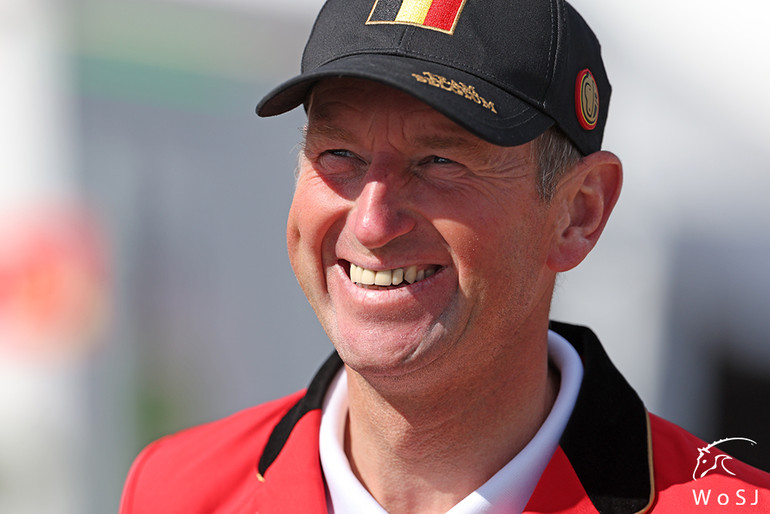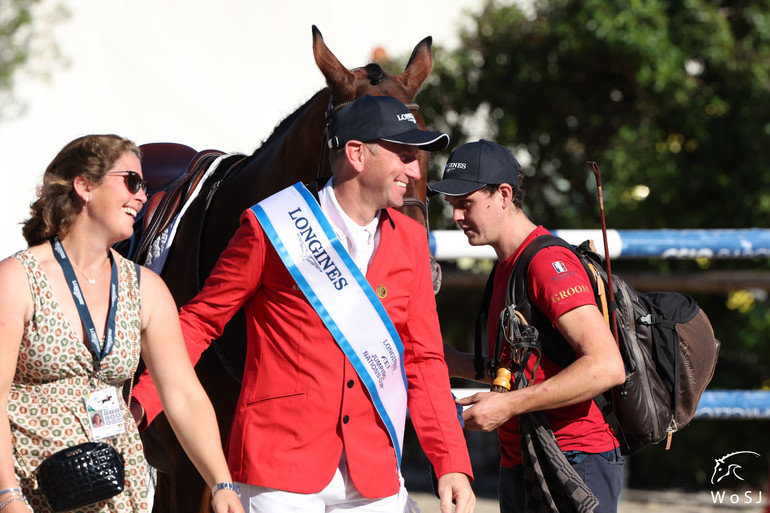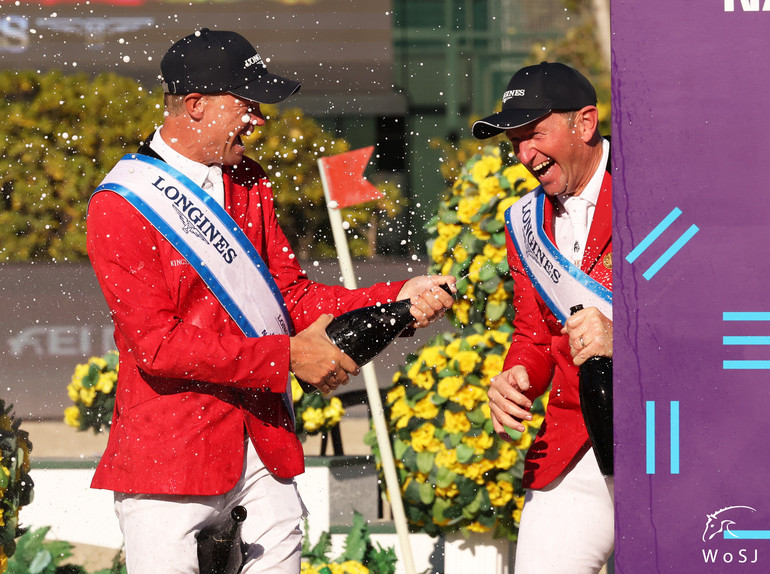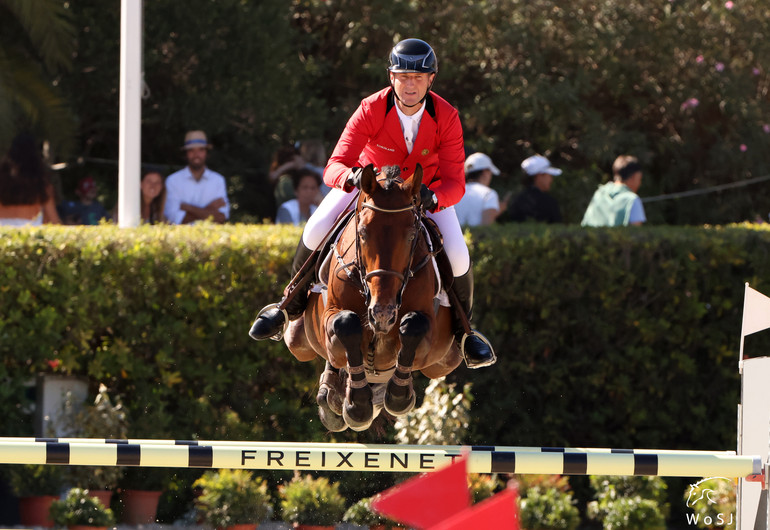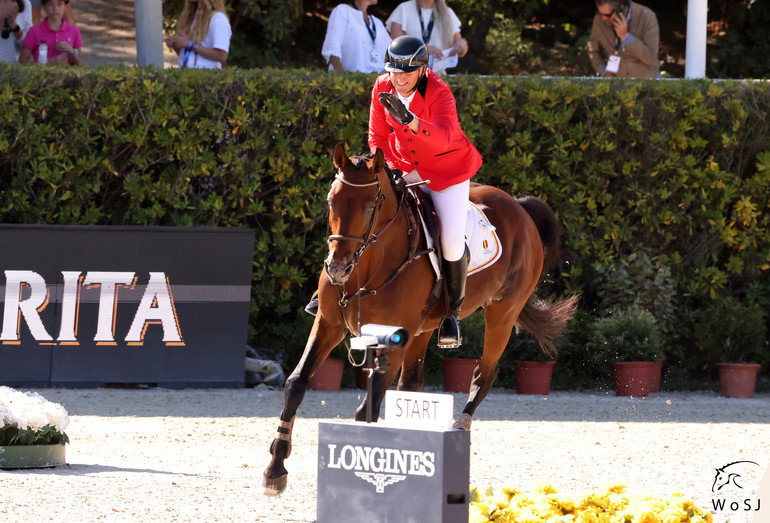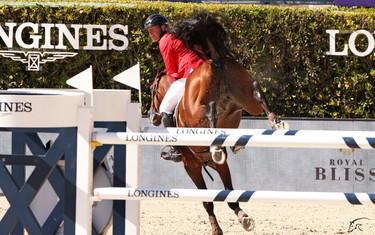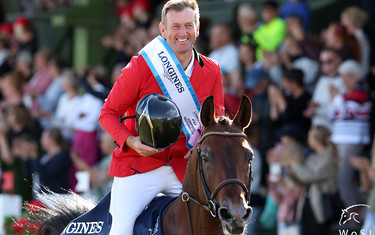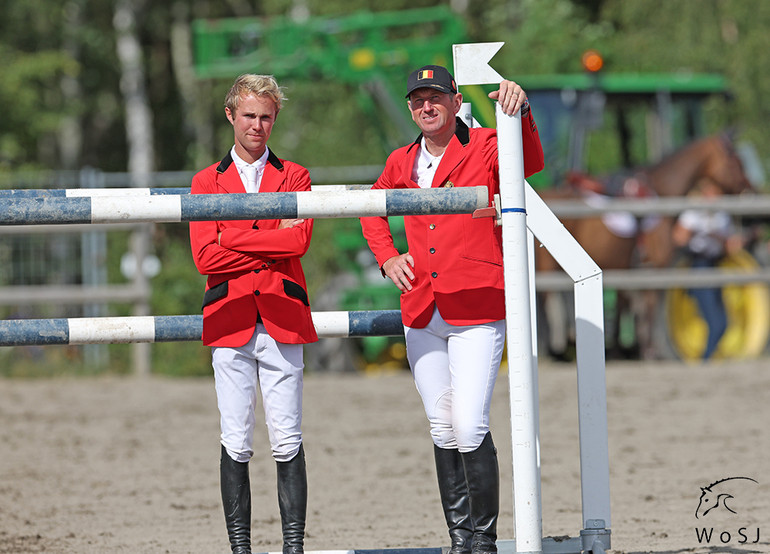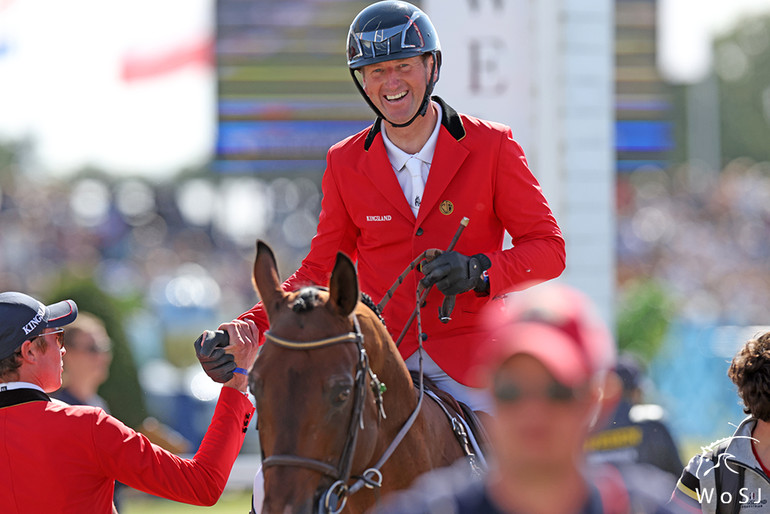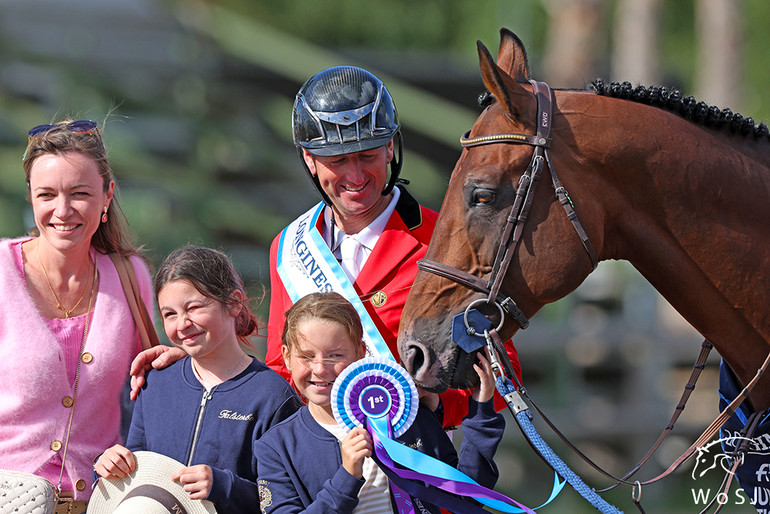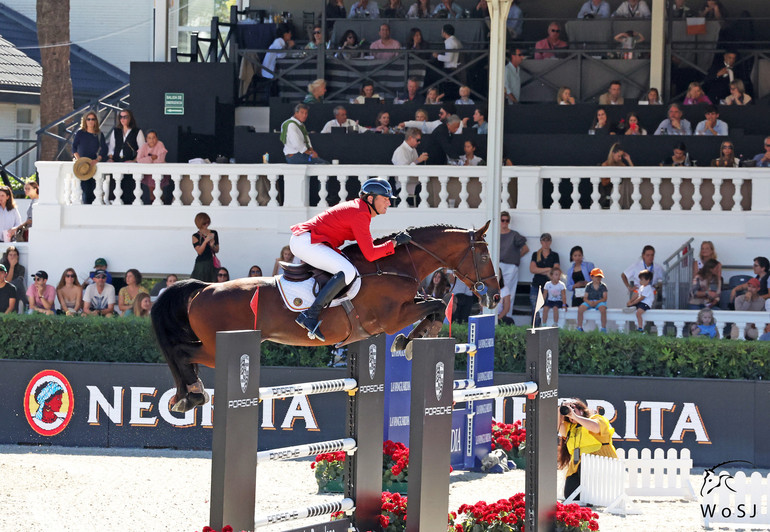Text © World of Showjumping
Koen Vereecke has had the season of his life. At the age of 53, Vereecke broke into the Belgian A-team this summer – going from strength to strength with the 12-year-old stallion Kasanova de La Pomme (Bamako de Muze x Malito de Reve). Starting as reserve in St. Gallen at the beginning of the outdoor season, Vereecke finished it off by jumping double clear at the Longines FEI Jumping Nations Cup Final in Barcelona – where he helped his team take the win as well as secure qualification for the Paris Olympics. While Vereecke might not be a household name outside Belgium, he is no newcomer – his first senior Nations Cup appearance took place already 20 years ago. “At the moment, I have good horses,” Vereecke says humbly about his sensational 2022-season. “And it always depends on the horses.”
Combining two bases
Vereecke was born into horses and started riding at a young age. Until he was 28, he had only ever ridden young horses though and was sure that would be his calling – training and selling future prospects. “I thought that would be my career, working with young horses,” he explains. “Then I got one older horse, could go into the bigger sport a little bit, and the results got better and better. However, I was always forced to sell the best horses to keep my business going. Now, after all this time, I probably have the best horses that I have ever had in my stable.”
Now, after all this time, I probably have the best horses that I have ever had in my stable
Based in Waarschoot, near Gent, Vereecke runs his own stable together with his son Andres, while his wife Karline De Brabander is in charge of her family’s renowned De Muze-stud in Sint-Niklaas. “In Waarschoot, I have a stable of 30 boxes together with my son. I have about ten horses for me to ride and my son has about 15-20, depending on the situation. I have everything I need at home. The stallions that I ride are stabled at De Muze, near Antwerp, and I go to ride them there. The stallions are used for breeding, so they have to stay at De Muze. The De Brabander-family has been supportive of me; I ride about 10-12 horses for them, including some younger horses and five to six older ones. Karline runs the stable at De Muze and I run mine, the horses are jumping good, so it works quite well – and if something works, why change it?”
Sensational 2022-season
2022 has been an unbelievable year for Vereecke. “I started the season in Oliva, and then did a couple of shows in St. Tropez,” he tells. “I could then go to CSIO St. Gallen as the fifth rider. However, during the show, one of the horses on the team could not jump, so I got in for the Nations Cup with Kasanova and we delivered a result of clear and four. The next Nations Cup we did was Falsterbo, where we jumped double clear and after that we went to Hickstead – and jumped double clear again! I started to feel a bit in, like I belonged on that level, and then I was selected for the team for Barcelona. I think Kasanova improved a lot this summer, he is simply a great horse. However, I do think our success is about the whole team around us as well. And it all began with my parents giving me a chance to start riding. I believe it is about everyone who has been involved; the breeders, the owners, my son, my wife, her family that gave me the chance to ride good horses… There are so many people to thank.”
I love to win and winning a Nations Cup is an unbelievable feeling
“Competing for your national team is one of the nicest things you can do as a rider, and I love it,” Vereecke continues. “Our team spirit is great. We are all strong individuals, but at the end, we are a team, and have a lot of fun together. I enjoyed riding for the team already at the beginning of my career, and over the years that has not changed. I love to win and winning a Nations Cup is an unbelievable feeling; you do it with other riders, with your team – it is so special. And, there are so many good riders at the moment who can win – the competition is so tight – and that makes winning even more amazing nowadays.”
Kasanova de La Pomme
Vereecke started to ride the now 12-year-old stallion Kasanova de La Pomme two years ago. “He was approved in Belgium first, then he went for over four years to Germany, and when he came back my wife rode him for over a year,” Vereecke tells. “I took over the reins a bit more than two years ago, and last year we won the Sires of the World in Lanaken and he has really proven himself since. He has his own personality: At home he can be a little bit lazy. He takes a bit time to get started, and my wife told me to start quietly with him, that he gets more motivated once he gets going – and he really likes to jump! At shows, when he comes into the arena, he is really focused and has a lot of blood. When the courses get bigger, he actually only gets better; he gets more concentrated when it gets more difficult.”
“His best quality is that he always does his best, he always wants to get to the other side of the fence,” Vereecke continues. “He has scope, he is careful – he has so many good qualities. When I rode him the first time, it was a 1.40m class and it was raining like hell. I remember coming out of the ring, saying: ‘This one is a super star – maybe not now, but he will become one’. I thought he was unbelievable already then, and now he has proved how good he is.”
In addition to jumping clear, bucking between fences has come to be Kasanova’s trademark. “Sometimes the bucking gets a little bit annoying, but I let him do it, because I think it is part of his personality,” Vereecke smiles. “I believe that if I try to take it out of him, he might turn against me. When I am in the ring with him and we jump 1.60m, it is still easy; I never have to push him, and if he is able to buck and jump – then so be it. This summer he has also proved that he can breed and compete at the highest level. When he gets home from a show, he sometimes has to cover already that same evening and he also does so every day he is at home. When he is at the shows, he knows he has to concentrate though, and he is actually quiet – that is a great thing with him.”
Self-made
Vereecke considers himself mostly self-made. “I learned a lot on my own, from the horses, and by looking at other riders,” he explains. “I have stayed curious, tried to be better all the time and I learn by watching the good ones.”
I learned a lot on my own, from the horses, and by looking at other riders
Now, Vereecke applies the same strategy to his son Andres by letting him figure out the industry – mostly on his own. “Growing up, I had to do this sport alone, and I do think it is good for my son to do this own thing. I support him the best I can, but he has to learn his own way. It is very special, getting to do this with my son, seeing him grow from a little kid into the rider he is today. He has done a lot already, but we have also been forced to sell the good horses that he has been riding to keep the business going and build the stable. I am always trying to find young horses for him that we can build up together. I hope he gets as far as possible.”
“It is not easy to find enough good horses for two riders though,” Vereecke continues. “Nevertheless, I think having two riders is an advantage for us, and we are quite different in our riding styles. I ride very natural and forward; he keeps them more together. Some horses prefer him, others like me – we try to find the best way for each horse. A horse might fit him better than me, and we try to bring the horses to the right rider instead of trying to change the horses.”
“I think the biggest challenge in our sport is to keep the good horses, and if you get to keep them, making sure that they stay sound and healthy, and have a long career,” Vereecke says. “Starting with a young horse, working 3-4 years with it, and ending at the highest level, that is something I enjoy a lot.”
At home, Vereecke’s system is very simple. “They all go in the field every day. We ride a lot in the woods, and try to treat the horses as natural as possible. I keep my horses barefoot, unless they have to jump on grass,” he tells. “Keeping the horses barefoot is something my father already did, so I guess we have been on the forefront of it before the French and the Swedish made it famous. We always thought it was better for the horses. I think the biggest benefit of keeping the horses barefoot is that it helps to keep the horses sound – I really believe we have had less injuries because of it. However, some horses do need shoes, that is something that cannot be ignored.”
All about the horse
When it comes to future goals, Vereecke has a simple answer: “Again, it all depends on the horses,” he says. “The most important thing for me is that my horses stay healthy and sound, and me as a rider as well – those are really my only goals. I might do Mechelen if I can, but my plan is to have a quiet winter and keep my focus on next summer. My dream is to ride at the 2024 Olympic Games in Paris… but that is a dream. I will do my best to get there with Kasanova, I think he is a horse for it. It is always difficult to make the Belgian team, we have so many good horses and riders. However, you always see – not only in Belgium – how keeping four top combinations in form and ready for a championship is not that simple. A lot can happen, and at the end, the way there is long and hard. Every year when there is a big championship, you see good combinations falling out for one reason or another. That is why I say my main goal is to keep both my horse and myself healthy.”
The good thing is that the older we get, the better we are as we have the experience and knowledge
“I had some good horses in the past, but back then I always lost them,” Vereecke continues. “They were either sold or left to other stables because I had to make my business go around. Now I have great support from the De Brabander-family and their horses are not for sale: The stallions cover, and their mares are used for embryo transfer – and they stay. This has given me the opportunities to reach for the higher level. For sure this is the best year of my career, but I do hope there is more to come. I have really good horses at the moment, especially Kasanova, who is truly one of a kind. “
“It is unbelievable though, if you look at other sports, when an athlete turns 30, they are considered old… In our sport, if you stay fit in your body and don’t get injured, you can easily keep going for a long time. And the good thing is that the older we get, the better we are as we have the experience and knowledge.”
Preserving horsemanship
“The sport has changed so much, it is unbelievable,” Vereecke says. “It is much more professional now and has become more detail oriented. Riders are followed by trainers, they take better care of themselves and do other sports to stay fit. Everyone rides much faster than before, the material is lighter and the horses have changed. However, what has not changed, is that to get somewhere you always need a good horse.”
“I hope we stay as an Olympic sport,” Vereecke continues. “When it comes to horse welfare, I think it is something most riders understand and take very seriously, because if we don’t do so as a community, there is a chance that in 15-20 years, we won’t be riding horses anymore. There is a lot of pressure from the outside, from people who don’t understand our sport so I think we have to educate the general public. At the same time, we have to make sure we preserve horsemanship – it is our duty to teach the younger generation how to care for their horses.”
No reproduction without written permission, copyright © World of Showjumping.com



